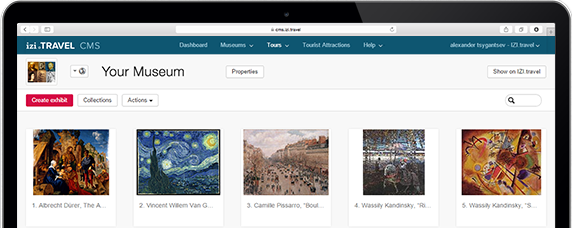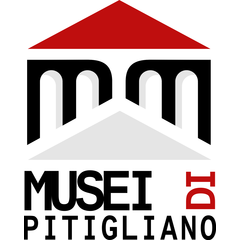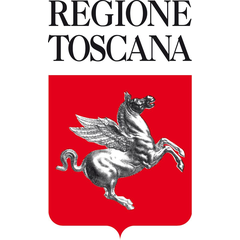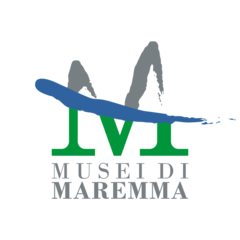Museo Museo Civico Archeologico della Civiltà Etrusca Enrico Pellegrini & Museo
- Download the applinks
- iOS
- Android
- Windows Phone
Info museo
Riguardo il museo
The name Musei Civici di Pitigliano englobes two distinct realities which complete one another. The Museo Civico Archeologico della Civiltà Etrusca, with its completely renewed exposition and educational apparatus, includes archeological material from the two Etruscan sites found on the municipal territory, Poggio Buco and Pitigliano. The Alberto Manzi Open-air Archeological Museum, open since 2003 with educational setups inside the tombs and models of protohistorical and Etruscan dwellings, submerges visitors into the environment from which the exposed objects came from.
The open-air musem which accomodates La città dei vivi and La città dei morti was born from an idea by Alberto Manzi, the never forgotten “maestro”, mayor of Pitigliano between 1995 and 1997. The project is characterized by its strong educational value and for the efforts made to give value to the natural and historic legacy that made the town famous.
The archeological area includes a tuff plateau, similar to the one on which the suggestive medieval village of Pitigliano rests, once the home of a proto-historic settlement and of an Etruscan city, surrounded by deep and narrow valleys along the slopes in which Etruscan cemeteries were developed in the Orientalizing age and the Archaic age, with their crisscrossing paths - the so-called vie cave- deeply cut into the tuff.
The park allows for visitors to be completely immersed in the story of these places. As we take a walk through La città dei vivi, it’s possible to experience the various phases of urban settlement, from the articulated proto-historical village of the late Bronze Age, represented by an educational circular hut model, in almost actual size, to the Etruscan city, represented by a three-roomed house with a portico, visible on the inside thanks to virtual effects.
A via cava or caved path conducts us to the underlying città dei morti, where it’s possible to visit the Gradone Etruscan necropolis, active from the second half of the VII Century BC until almost the end of the VI Century BC. Here we can visit the demonstrative tombs, inside which the burial of spouses Larth and Velia has been set up for show. In this way, we are able to experience the sacred nature and emotions of an Etruscan funeral ceremony. Descending even more, we find the San Giovanni necropolis with tombs from the VI to the beginning of the III Century BC. Inside a monumental tomb with two columns, there are some exposed panels depicting images of the costumed stage performances which take place during the summer.
Samples of the pottery discovered in funerary chambers are exposed in the archeological museum of Etruscan Civilization accomodated inside Fortezza Orsini.
The Pitigliano Museum dates back to 1864. During the past century, the collection was re-accomodated several times to make space for the ever growing number of items discovered in the zone, but after WWII, reduced to a pitiful state of decadence, the museum had no choice but to close, as surviving archeological items were moved to Grosseto and Florence.
The reopening was possible in 1995 thanks to a Vaselli donation to the municipality of Pitigliano. This donation is made up of about a thousand items from the Poggio Buco necropolis, in an area which was private property of Adele Vaselli, who conducted excavations during the years 1955-1960.
The Vaselli collection includes a great number of vases with geometric decorations together with an important core of Etruscan-Corinthian vases and rare bucchero vases with decorations in relief, among which we can highlight the great kraters and water amphoras dating back to the first half of the VI Century BC.
The exhibition itinerary was completely renovated in 1999 with the inclusion of objects which document human activity in Pitigliano in prehistoric and Etruscan times. These items date back to a period between the Late Bronze Age and the III Century BC in a place known as «Le macerie», in the ancient downtown area of Pitigliano (excavated in 1998). There are also Etruscan vases from the VII-VI Centuries BC which are documented by the ceramic objects in the B. Martinucci collection, which had formerly been preserved at the Florence National Archeological Museum. One of the most precious items is a fragment of attica kylix with black figures, attributed to the renowned Greek painter Exekìas.
Along the exhibition itinerary, it is possible to observe a storage area/workshop with ceramic objects as they are being restored.
Opere
Collezione artistica con audio
-
Room 2 - Necropolis of Poggio Buco – The Olla of the Dancer
-
Room 4 - Necropolis of Poggio Buco: the Four-handled Krater
-
Room 4 – Necropolis of Poggio Buco – Hydria with applied relief decoration
-
Room 4 – Necropolis of Poggio Buco – Amphoras of the Scaled Large Amphora Type (by the Le Havre Painter), and other Etrusco-Corinthian productions
-
The Alberto Manzi Open-air Municipal Archeological Museum
-
The Necropolis of Saint John Nepomuk and the Monumental Tombs
Recensioni
Scarica l'app gratuita izi.TRAVEL
Crea i tuoi audio tour!
L'uso del sistema e l'app di guida per dispositivi mobili sono gratuiti





